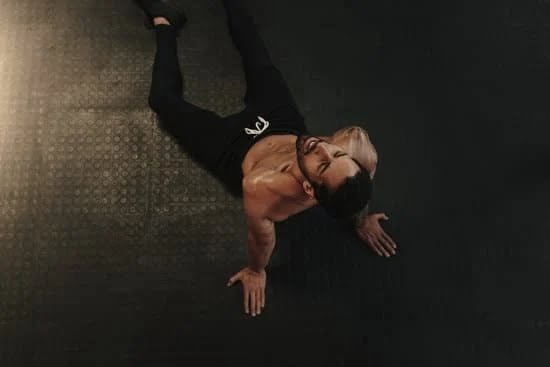Introduction
Personal fitness trainers are highly sought-after professionals who help their clients to stay in shape and live a healthier life. Becoming a personal trainer involves having the right basic qualifications, as well as practical expertise, so that you can offer safe and effective exercise programs tailored to your clients’ individual needs. To become a successful personal trainer, there are several key steps that should be taken before you begin working with clients.
Qualifications:
The first step to becoming a qualified personal fitness trainer is obtaining the appropriate certifications. Depending on the area in which you live, certain qualifications may be required in order for you to legally practice as a health professional. There are various courses available online and at local colleges and universities offering certification in areas such as fitness, nutrition, anatomy and physiology. Having all of these qualifications can greatly increase your ability to attract potential clients who may have requirements related to their certification when hiring someone as their personal fitness trainer.
People Skills:
In addition to having the proper qualifications and certifications, it is also important for aspiring personal trainers to develop the right set of people skills if they want to succeed in the job. As a personal trainer, you need to be able to assess each client’s unique goals and capabilities while also having an understanding of how your guidance can help them reach their desired level of fitness. Moreover, having excellent communication skills is essential since many of your clients will come from different backgrounds and experiences – being able to successfully adapt your approach accordingly will enable you to provide more meaningful advice and support throughout each session.
Exercise Programs:
Once you have obtained all necessary qualifications and developed the proper people skills, another essential element needed for success as a personal trainer involves designing exercise programs specifically tailored for each individual client based on his or her particular goals. To do this successfully requires knowledge of different training techniques that are used in broad range of exercises from aerobics, strength training, yoga/stretching etc., so it will require considerable study on your part if don’t already have experience with these methods yourself. After putting together an effective routine for each one of your clients that consists of varied activities throughout the week (including cardiovascular workouts plus strengthening exercises) simply following this program over time should yield the best results in terms of client satisfaction with your services.
Invest Your Time
In order to train as a personal fitness trainer, it is important to invest your time into research and due diligence. Before you can become certified as a personal trainer, it is essential to understand the categorization of the different types of certifications and the requirements and costs associated with each one.
It is important to note that in some cases, a combination of certifications may be required by employers. Depending on the nature of your specialized area, additional education and experience could be required. Asking yourself questions around what level of certification you are looking for, which type of organization is best for offering that particular certification, and how much money you are willing to invest up front and ongoing into maintenance fees can inform your decision-making process as you embark upon this journey.
When researching fitness certifications and organizations, it’s important to consider the type of accreditation each program has received along with other determining factors such as cost. Generally speaking, there are three main types of certification available: Nationally Accredited Certification Programs (NCCA), State Licensed Certifications (such as CPT register through AEDT), and Recognized Authorization Bodies (RABs). NCCA offers a gold standard in certifications alongside other respected programs like ACE or NASM which have their own associated guarantees as well. Typically these programs involve application fees, in addition to exam costs, textbook or online curriculum study systems, along with any applicable testing center or administrative fees before or after passing the written test. State licensed certifications involve variable legal requirements from state-to-state that require individual credentials before eventual registration within an appointed work environment indicated via job openings. Finally RABs like NFPT or ISSA commonly offer shorter adaptation periods than those granted by NCCA accredited certificates but guarantee considerable salaries when hired under their tagline.
Education is Key
First and foremost, education is vital to becoming a successful personal fitness trainer. Since the job of a personal fitness trainer involves helping clients set, reach and maintain fitness goals, it is necessary to understand exercise science and nutrition principles in order to provide effective training. Potential trainers should take courses or attend seminars that cover topics such as biomechanics, exercise physiology and nutritions. This will give them the fundamental knowledge they need in order to devise an appropriate and safe program for their clients. Furthermore, by understanding how food intake affects exercise performance, trainers can advise their clients on optimal nutrition choices according to their individual needs.
Additionally, those interested in forging a career as a personal fitness trainer should gain certification from reputable organizations such as the American Council on Exercise (ACE), National Academy of Sports Medicine (NASM) or National Strength and Conditioning Association (NSCA). Having certification also provides assurance for prospective employers that you meet widespread industry standards. Such certifications involve elements such as written exams covering subject topics mentioned above, calculations for determining target heart rates or other measures plus practical exercises showing your ability to perform each exercise with proper form.
Crafting the Perfect Program
An important part of being a successful personal fitness trainer is the ability to craft an effective program for your clients. Creating the right program requires a combination of technical knowledge and creative ideas; each client is unique and must be approached with individually tailored fitness solutions. To create the perfect solution, you will first need to assess the specific needs of your client, including any medical concerns or special physical abilities they possess. Once you have this information in mind, design a program that takes into account their abilities along with the desired outcomes and timeframes for achieving those goals.
The most important thing to remember through this process is always to tailor programs specific to each individual client. Research different forms of exercise, from high-intensity interval training (HIIT) to more traditional aerobic activities like running or biking – there are many different ways to approach each person’s unique development goals. Consider adding strength building using bodyweight exercises, kettlebells, suspension bands and weights when appropriate. Also consider incorporating core work such as planks, medicine ball throws and bicycle crunches into your regimen for maximum benefit and impressive results! Finally, ensure your clients are properly motivated during their workouts so they can achieve their goals in a timely fashion and enjoy the process. Utilize group incentive plans such as partnering up with another client or goal rewards like movie tickets or restaurant gift cards. Above all else make sure they stay committed while having fun with their training!
Put Yourself Out There
One of the most important steps to becoming a successful personal fitness trainer is putting yourself out there in order to promote and grow your client base. Building relationships with potential clients is key to marketing your services. When approaching potential clients, greet them with a positive attitude and emphasize the benefits of their training sessions. Additionally, be sure to show that you are an expert in your field by sharing some tips or advice on proper form, stretches, or lifestyle changes that can enhance their workout experience. Once you have established a relationship with a client, make sure to consistently communicate with them about nutrition plans and other changes that could help improve their lifestyle and attain their goals faster. Furthermore, online platforms such as social media or email can also help build your network of connections even further. By periodically posting images of your gym or workouts routine, engaging with people on various posts, or sending newsletters to past clients reminding them why they need you, they will be more likely to come back and refer you on to others.
Preserving Your Clients
As a personal fitness trainer, it is essential to maintain a level of support and motivation while also providing challenge and accountability. Striking the right balance can be difficult as it may look different for every client depending on their individual needs. Here are some tips to help you as a trainer reach this balance:
Form close relationships with clients: One of the key factors in providing an effective training environment is establishing close interpersonal relationships with each client. This will allow you to better understand their goals, challenges, and motivation.
Listen actively and show empathy: Be an attentive listener so that you can best meet each client’s needs and provide positive reinforcement when necessary. Remember to stay positive even if setbacks occur or your client feels discouraged; words of encouragement have immense power to uplift people in hard times.
Introduce challenges but remain mindful of limits: Provide challenges that encourage growth and push clients out of their comfort zones without going beyond what they can physically handle. If certain exercises feel too difficult, suggest scaled-down versions or modifications that minimize risk while still allowing for a productive workout session.
Provide feedback on technique: Watch for common mistakes such as poor posture or uneven body distribution during exercises and provide corrective feedback accordingly. Make sure to stick to gentle guidance rather than criticism if any errors occur during workouts; your job is not just to train clients but also help them build self-confidence.
Regularly review progress with clients: Check-ins are important opportunities to discuss tangible benchmarks, offer additional motivation if needed,and update workout plans according to changing goals or fitness levels. Reward short-term successes when possible in order promote goal-driven behavior within your clients!
Building Relationships
If you are looking to become a successful personal fitness trainer it is essential to be able to connect with your clients on a fundamental level. Establishing respect and trust with those around you will make sure that your relationships with them last long into the future. To do this, you must be able to make them feel comfortable while they are training with you, asking questions instead of giving orders and demonstrating empathy when necessary. Furthermore, it is also important to provide technical advice specific to their goals. This way clients know that you understand what they want to get out of their training, which helps in developing trust and respect for one another. Additionally, physical contact can be beneficial if it is employed correctly; showing enthusiasm and firm handshakes are just two examples. It also might be worthwhile to discuss nutrition plans – as well as showing interest in their lives away from the gym – so that you set clear boundaries between themselves and professional life. Lastly, regular social activities (such as group outings or team-building events) can create an environment where everyone allows each other to progress further in the program.
Looking Ahead
Personal training goals don’t just happen overnight – they require careful planning and dedication. To help you make the most of your career as a personal fitness trainer, setting achievable and measurable long-term goals is essential. You need to ensure that these objectives will keep you motivated and driven throughout your journey.
To begin crafting your goals, sit down with a journal and pen to figure out where you want yourself to be in five years’ time. Think about what skills you wish to have acquired; what qualifications you would like to achieve; which certifications you’d like to consider; and the kind of clientele you envision having. Be sure to write down the kinds of experiences or outings that may help further boost your value as a trainer, whether it’s seminars or conferences in other countries. All of this should help form both short-term goals for each year and milestones that lead up to meeting your entire goal over five years’.
With proper focus on achieving such goals comes responsibility – not only do you need to ensure an active lifestyle but maintain a healthy diet in order to project a positive image within clients’ circles. Additionally, remember that much like any business venture it takes time for word of mouth referrals from satisfied customers spread around the area, leading more clients directly into your office each day. It is at this point that entering contests or competitions can also pay off as recognition starts rolling in from fellow industry peers as well as prospective employers looking for top-notch talent!
Conclusion
Becoming a successful and professional personal fitness trainer involves pursuing education, gaining experience, networking and marketing yourself as both a knowledgeable expert and reliable service provider. Education is the backbone of any profession and a good way to get started is by taking courses related to physical fitness on topics such as anatomy and physiology, nutrition, kinesiology, exercise technique, and program design. Aspiring trainers should also look into certifications in order to be recognized in the industry and increase their credibility.
Having gained knowledge through books or an educational institution does not mean that one can suddenly become a top-level personal trainer. Becoming an established personal trainer requires considerable childcare hours of hands on experience with real life situations involving clients. Training under an experienced mentor can provide you with the necessary guidance before being able to stand on one’s own two feet n independently train clients. It is also important for individuals wanting to pursue this field to network widely – attend industry events or join associations where they will have access to further resources like job postings. Lastly, market yourself well within your target community or locations – ensure your credentials are widely shared so potential clients can find you easily. By staying committed and taking advantage of available resources, it won’t take long before you become a professional and successful personal fitness trainer.

Passionate about providing useful information to anyone with an interest in the field of Personal Training, I strive to pass on to our readers quality information and to answer any questions about Personal Trainers, the work they do and how to become one.





